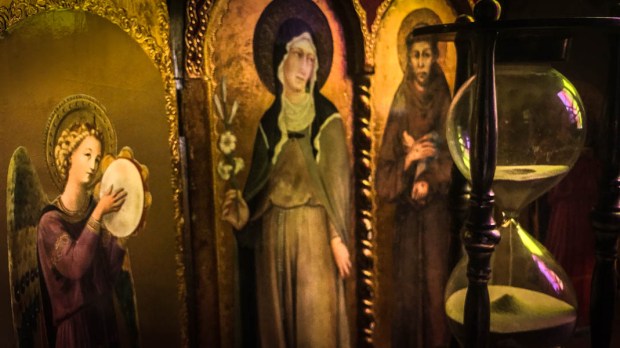Consistency in prayer is one of the hardest difficulties to overcome. We might be filled with great zeal on one day and pray for a full hour, but when we wake up the next day, that fervor has died down and our busy schedule ends up preventing us from praying at all.
Thus, our prayer life is sporadic at best and we don’t know the next time we will sit down to pray.
To solve that common problem and create consistency in prayer, religious communities since the very beginning of Christianity have created the “horarium.” The word is Latin for “of the hours,” and refers to a specific daily schedule of prayer. It is a tradition that has deep biblical roots, starting in the Old Testament.
King David, who is believed to have written the Psalms, proclaims, “Evening and morning and at noon I utter my complaint and moan, and he will hear my voice.” (Psalm 55:17)
Even the prophet Daniel is shown to have a specific schedule of prayer, “When Daniel knew that the document had been signed, he went to his house where he had windows in his upper chamber open toward Jerusalem; and he got down upon his knees three times a day and prayed and gave thanks before his God, as he had done previously.” (Daniel 6:10).
The Jewish people then began a tradition of praying three times a day: morning, afternoon and evening.
With the advent of Christianity, Jesus’ apostles at first continued to observe the traditions of the Jews and continued to pray at the appointed times. Over time, however, three times a day did not seem enough, especially after St. Paul exhorted the Thessalonians to “Pray without ceasing.” Christians then went back to the Old Testament for guidance. In particular, they found this passage, “Seven times a day I praise thee for thy righteous ordinances.” (Psalm 119:164)
St. Benedict is well known for using these traditions to create a rigorous schedule of prayer for his monks, who stopped periodically throughout the day to pray.
Christians and Jews alike recognized the need to stop whatever a person is doing and pause for a moment of prayer. This was not done randomly, but at specific times of the day. As a result, they did not have to guess the next time they were going to pray, but had it already integrated into their schedule. Church bells reminded them of their prior commitment and invited all people to pause for a specific time of prayer.
They made time for it, because they knew it was important to have a few moments alone with their Beloved. This is similar to how a husband and wife are encouraged to go on regular dates. It helps build the relationship and solidify it, able to weather through any storm.
In an age when our schedules are busier than ever, the “horarium” is extremely important. It roots each day in prayer and places it as a priority. The exact time and length of prayer is up to each individual (15 minutes a day is a good starting point), but the important part is integrating it into your schedule.
While your entire day can certainly be offered “as a prayer,” it is still vital to set aside specific times each day for a heart-to-heart with God. By doing so, you will foster a deeper relationship with God and open yourself up to the graces he wants to give to you.

Read more:
Help! I have no time to pray!

Read more:
The best way to make time for prayer when you’re really busy

Read more:
12 Time management hacks to get the most out of your day

